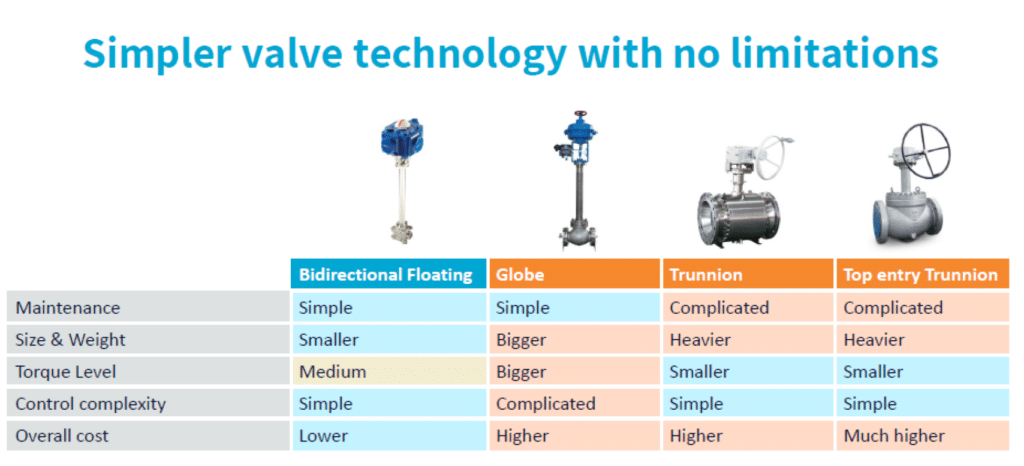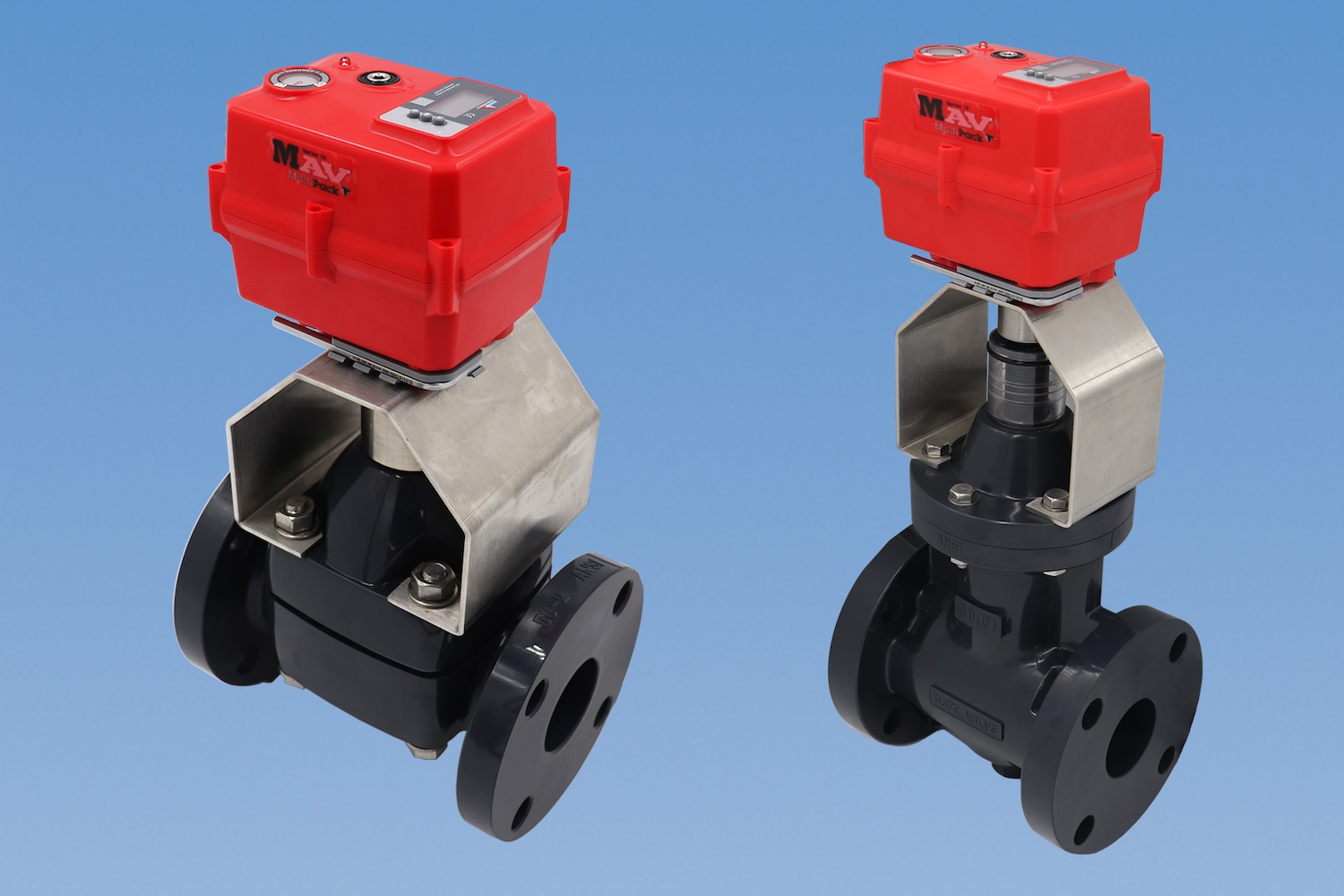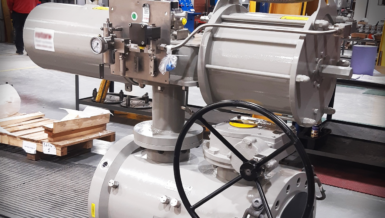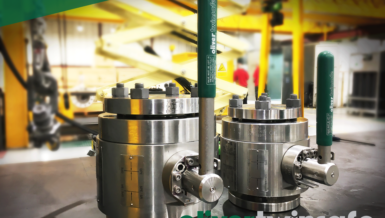Examples of such applications are tank inlets/outlets for filling and emptying conditions, pressure buildup in closed and empty lines, gasification and liquefaction in unknown locations, and multi-use lines for systems in LNG terminals, shipping, tankers, dispenses, pumps, and fueling stations, as well as in marine applications related to gas valve units (GVUs) for dual-fuel engines.
While bidirectional globe valves were traditionally the main choice for media control and shutdown in these applications, they also come with multiple challenges when compared to alternative valve types such as ball valves. These include:
- Small Cv size – this affects the selection of the overall piping size and also makes these valves a potential bottleneck in the system’s overall flow capacity.
- Require a linear actuation device for both shutoff and control – thesedevices are usually much more complex and costly when compared to the quarter-turn actuation devices required to control and operate quarter-turn style valves such as ball valves. When taking the whole valve-actuator package into account, this has a significant impact on the overall complexity and cost of the system.
- Emergency shutdown functionality required in many LNG systems is more complex when using globe valves.
These challenges are even more significant for Small Scale LNG applications (SSLNG) as these systems need to be smaller and much more cost effective, while still maintaining maximal flow for shorter load and offload operations.
As ball valves provide a higher Cv when compared to globe valves of the same size, they are smaller in size without losing flow rate. This allows for the entire piping system to be reduced in size, which drastically reduces the overall system size, weight, and cost. This will also significantly improve the ROI of such implementations.
However, standard Cryogenic floating ball valves are unidirectional, which means they are less suitable for the abovementioned applications requiring bidirectional valve seals.
Why are standard cryogenic ball valves unidirectional?

As can be seen in the following image, standard floating ball valves for cryogenic conditions have a relief hole in the ball on the upstream side to prevent pressure accumulation in case of phase changes.
When these valves are in the closed position, any liquefied gas media that is trapped in the closed ball may start evaporating and expand up to 600 times of its volume, possibly causing the valve to explode. In order to prevent the explosion of the valve, most of these valves have this kind of upstream hole relief mechanism. As a result, these traditional ball valves cannot be used for applications requiring sealing in both directions (bidirectional).
How can bidirectional cryogenic ball valves solve these challenges?

This is where bidirectional cryogenic floating ball valves come into the picture. These valves are different to standard, unidirectional cryogenic valves as:
- They do not have a ball hole relief
- They are sealing in both flow directions
In bidirectional cryogenic floating ball valves, the upstream relief hole mechanism is replaced with bidirectional spring-loaded seats. The spring-loaded seats allow the excess pressure generated by the trapped liquefied gas media to be released and this prevents the risk of valve explosion.
Additionally, the spring-loaded seat design assists in maintaining lower torques and provides more balanced valve operation in cryogenic conditions.
These valves also include a second graphite seal that adds fire-safe functionality to the valve. This seal does not come into contact with the media unless a disaster scenario occurs that causes the polymeric part of the valve to burn, in which case the graphite seal fulfills its fire-safe function.
The advantages of using bidirectional cryogenic floating ball valves for cryogenic applications
As compared to globe, trunnion and top-entry trunnion valves, bidirectional cryogenic floating ball valves provide all the benefits of the high flow (Cv) ball valve, but with no restriction on flow direction or sealing, a safer design for cryogenic use, smaller size and weight and lower level of complexity. They also require a simpler and smaller actuator (quarter turn), which makes the entire system smaller, lighter and more cost effective.

The following table summarizes the pros and cons of using bidirectional cryogenic floating ball valves as compared with using alternative technologies in terms of maintenance, size and weight, torque level, control complexity and overall cost.

Novel designs of Small-Scale LNG systems utilizing bidirectional cryogenic ball valves take advantage of the unique capabilities of ball valves to allow full-bore flow, high flow efficiency and pipe drainage. The system pipe sizes can be reduced while maintaining flow rates, reducing the overall size, weight, complexity, and cost of the piping system.
The abovementioned benefits for shut-off valves become even more significant in the case of control valves. The complexity of the valve automation package is dramatically reduced when using a quarter turn ball valve, which is now becoming a valid option for cryogenic system designs.
Such automation packages will be based on the simple technology of the bidirectional cryogenic floating ball valve, combined with the simplicity and cost effectiveness of quarter turn activators.
To summarize, bidirectional cryogenic floating ball valves are a game changer for the design of cryogenic piping systems and can have an even greater affect and benefits when implemented into Small- Scale LNG system designs.
This new technology has been successfully implemented over the last few years and has proven itself to have a positive effect on projects costs and reliable long-term operations of systems.































